Murder, Marijuana
& Missing Persons

COLIN SIMPSON
Stopover at Cannabis Capital Seen in Netflix Show
Garberville, Humboldt County, California
THE light was beginning to fade as my wife Sue and I headed into north-west California’s giant redwood territory in our black Dodge Charger rental. We were running a little late after stopping off to drive through the Chandelier Tree, a towering redwood with a car-size hole cut in it.
Back on the road, we reached the end of State Route 1, the 1,000-kilometre coastal highway that stretches from Orange County in southern California to Mendocino County in the north. We’d joined the route and then left it a number of times during an extended road trip through and across the state.
Now we were on US Route 101, known locally as the Redwoods Highway. This is a remote, sparsely populated part of California, way up north and not far from the Oregon border. It’s one of the places where the legendary wildman known as Bigfoot is said to have been seen. The nearest major city, Oakland, is 350 kilometres away.

We’d left the southern sunshine far behind, and the air felt cold in a way you don’t associate with California. We were starting to get the faint panicky feeling that happens when you’ve driven for long enough, it’s getting dark and you don’t have a room booked.
We began to notice signs for a place up ahead called Garberville. The name meant nothing to us, but we decided to see if there was a motel there, so we turned off the highway and headed into town. It’s a small place with a population of around 900 – just a main street, some shops including a supermarket, and a few other little roads. We’d been to lots of small towns on this trip, but as we stepped out of the car the atmosphere in this one seemed different, stranger, less welcoming. Maybe it was just the cold, we thought.
Largest Marijuana-Growing Area
We found a motel and checked in, then looked up Garberville, which is in Humboldt County, on the internet. Then it all became clear – we’d chanced upon America’s cannabis capital. For decades, illicit farms in the surrounding hills had been growing marijuana plants. Humboldt and the adjoining Mendocino County and Trinity County form the Emerald Triangle, the country’s largest marijuana-growing area with 770,000 kilograms of cannabis produced per year, according to state regulators. Conditions are said to be perfect for growing the crop, in the way that California’s Napa Valley and Burgundy in France are ideal for making wine.
We read grim news stories about dozens of people who had disappeared in unexplained circumstances. Over the years, federal agents, national guardsmen and even regular US Army soldiers had raided the farms, but the illegal trade persisted.

We gazed at each other in astonishment – it seemed incredible that such a place could exist. We headed out for a look around. The main street, Redwood Drive, had the usual collection of shops and diners, a gas station and a theatre advertising an upcoming appearance by an English rock musician who’d been famous many years before.
There was also a place called the Branding Iron Saloon. We stepped inside, and saw a couple of cowboys standing at the bar in Stetsons and boots. The bar was presided over by a woman manager who, while friendly enough, looked like she wouldn’t allow any trouble. Nevertheless, one young man was noisily out of his head. He didn’t give the impression he was experiencing the peace, love and understanding associated with marijuana back in the 1960s, so it seemed harder drugs, perhaps crystal meth, had reached the town.
Not Entirely Safe
We drank up and left, and went looking for something to eat. When we returned to the motel, Sue said she wouldn’t wish to be staying in Garberville on her own. It felt not entirely safe, in a way that we hadn’t experienced anywhere else in California.
The following morning we explored the town further. There was plenty of evidence of the disappearances we’d read about online the night before. Heart-wrenching flyers for help from people whose loved ones had vanished were displayed in shop windows, each one bearing an often-blurry photo of the missing friend or family member. Stores sold souvenirs such as T-shirts with the slogan: “Garberville – Where the Grass is Always Greener” and stocked water pipes and other drug paraphernalia.
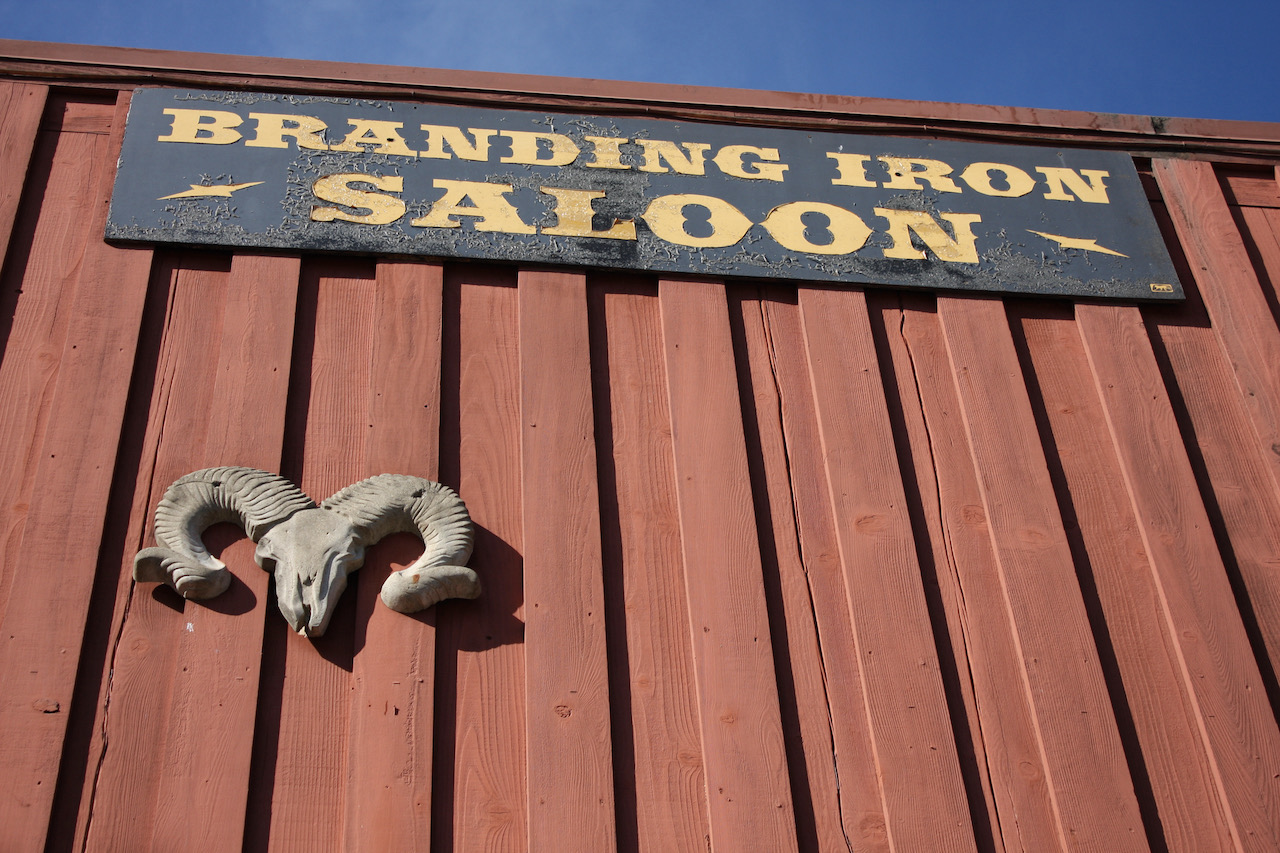
The town attracts casual labourers, known as trimmigrants because they cut the leaves off the buds as part of the growing process, to work on the farms during the autumn harvest season, the time we were there. It seemed to be lucrative – we overheard one conversation between a man who was trying, without success, to recruit a youngster for a day’s work – he said he didn’t need the money. One report says they can earn $300 a day.
Humboldt County’s marijuana farmers were the subject of Murder Mountain, a true-crime documentary series on Netflix. The show covered some of the disappearances and killings that happened in the mountains, focussing on the case of murder victim Garret Rodriguez, a 29-year-old who had worked at a “grow” – the local name for a marijuana farm.
Found in Shallow Grave
He moved to Humboldt County from his home in San Diego in late 2012, and the following April his family reported him missing. His body was found in a shallow grave in the county in December 2013. The case remains unsolved, though his family has set up a GoFundMe appeal to raise money to hire private investigators.
Other cases are featured on Facebook pages with names like Humboldt Missing, and websites run by organisations such as the Nor-Cal Alliance for the Missing.
The region’s cannabis industry dates back to the late 1960s, when members of the back-to-the-land movement left cities and moved to rural areas. Some settled in the Triangle, and found it was ideal for cultivating marijuana. The number of growers expanded rapidly in the decades that followed, and according to one frequently quoted estimate there are at least 20,000 in the three counties.


Murder Mountain was filmed after California legalised cannabis for recreational use in 2016. Growers were required to apply for permits, and small farming operations are seen in the show coming under pressure because of increased regulation, high fees and excess supply. Many were said to be going out of business.
In fact it seems that, despite the efforts to make producers go legit, many prefer to continue operating illegally. The Humboldt County Sheriff’s Office marijuana enforcement team uncovered 86 illicit growing or processing sites in 2019, the most recent year for which figures are available. More than 200,000 cannabis plants were destroyed along with 18,000 kilograms of processed cannabis, while 81 illegal guns were seized and 16 arrests were made.
Taste, Sip and Smoke
But there are signs that the industry has become a bit less clandestine. Before Covid a company was offering “Taste, Sip and Smoke” (they’ve even trademarked the name) tours of farms at harvest time in the Emerald Triangle.
We didn’t linger in Garberville for long, getting back on the road after picking up some food at the uninviting supermarket. It was a relief to leave the town, though it was a fascinating – if disturbing – place to have happened upon.
January 2021
Top photo: Mist hangs over woods outside Garberville.
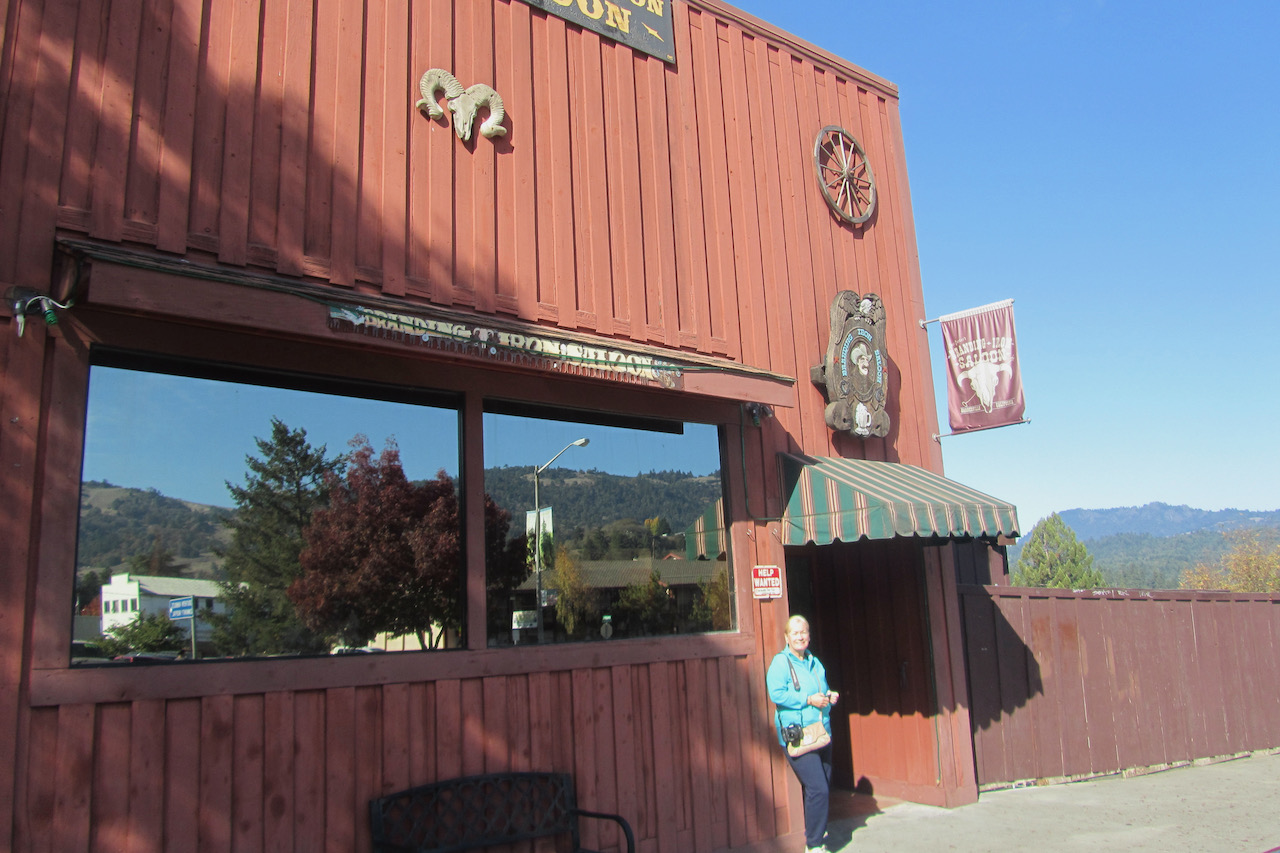
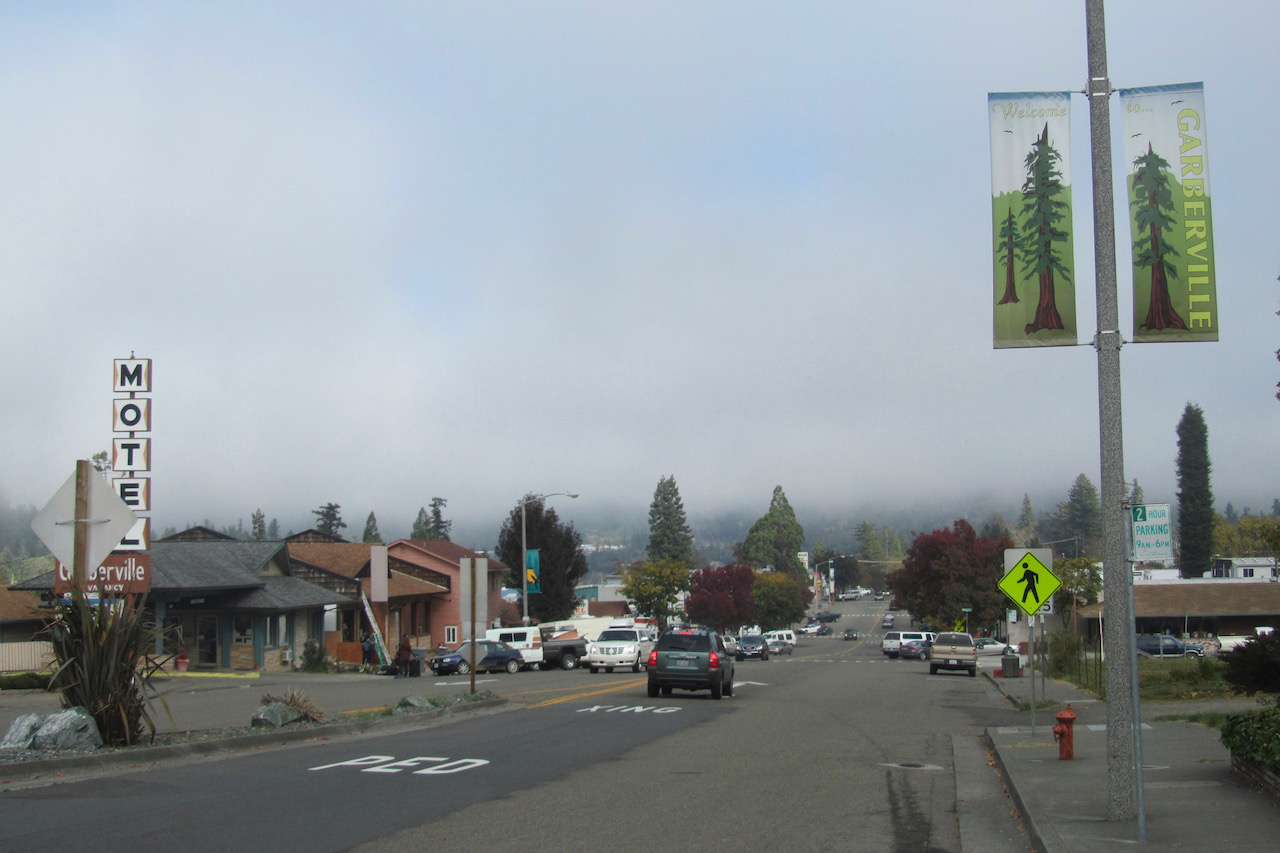
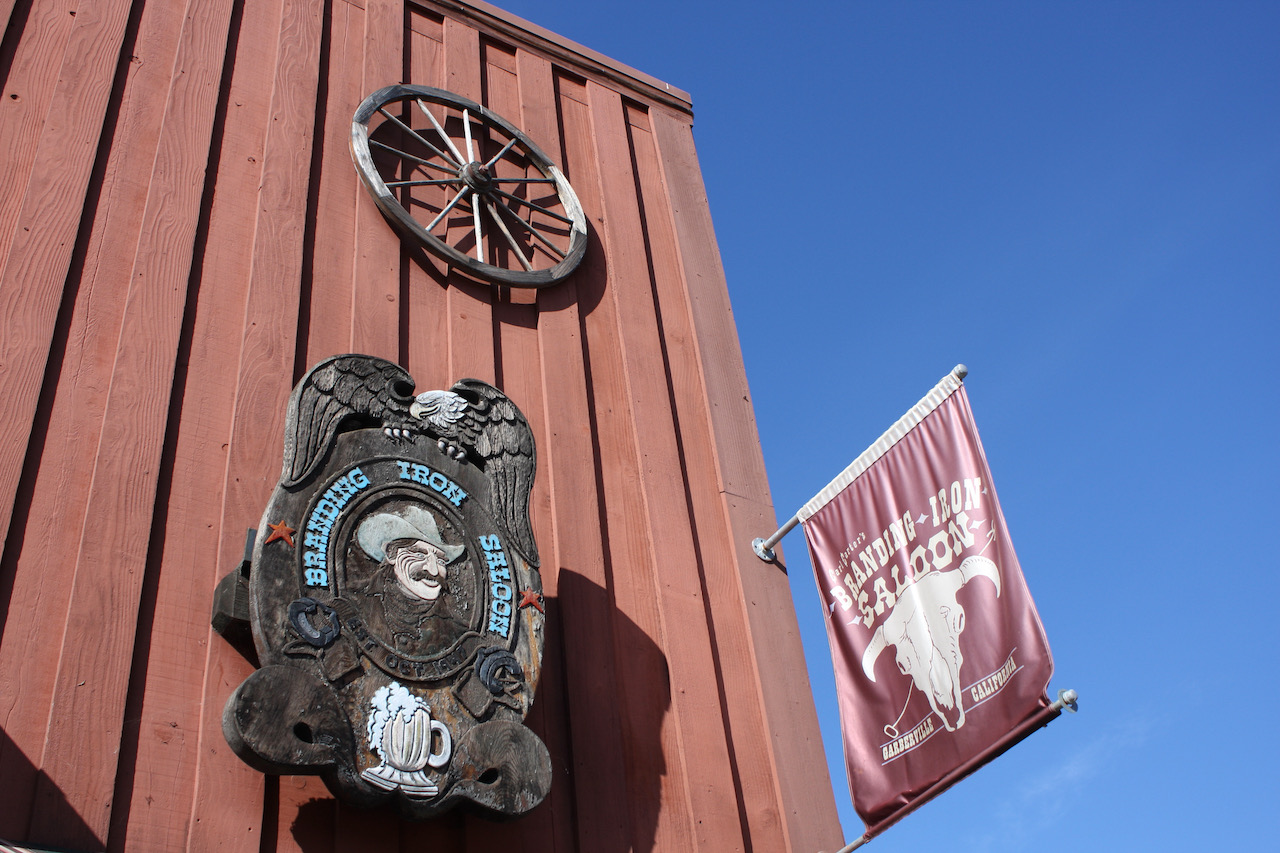
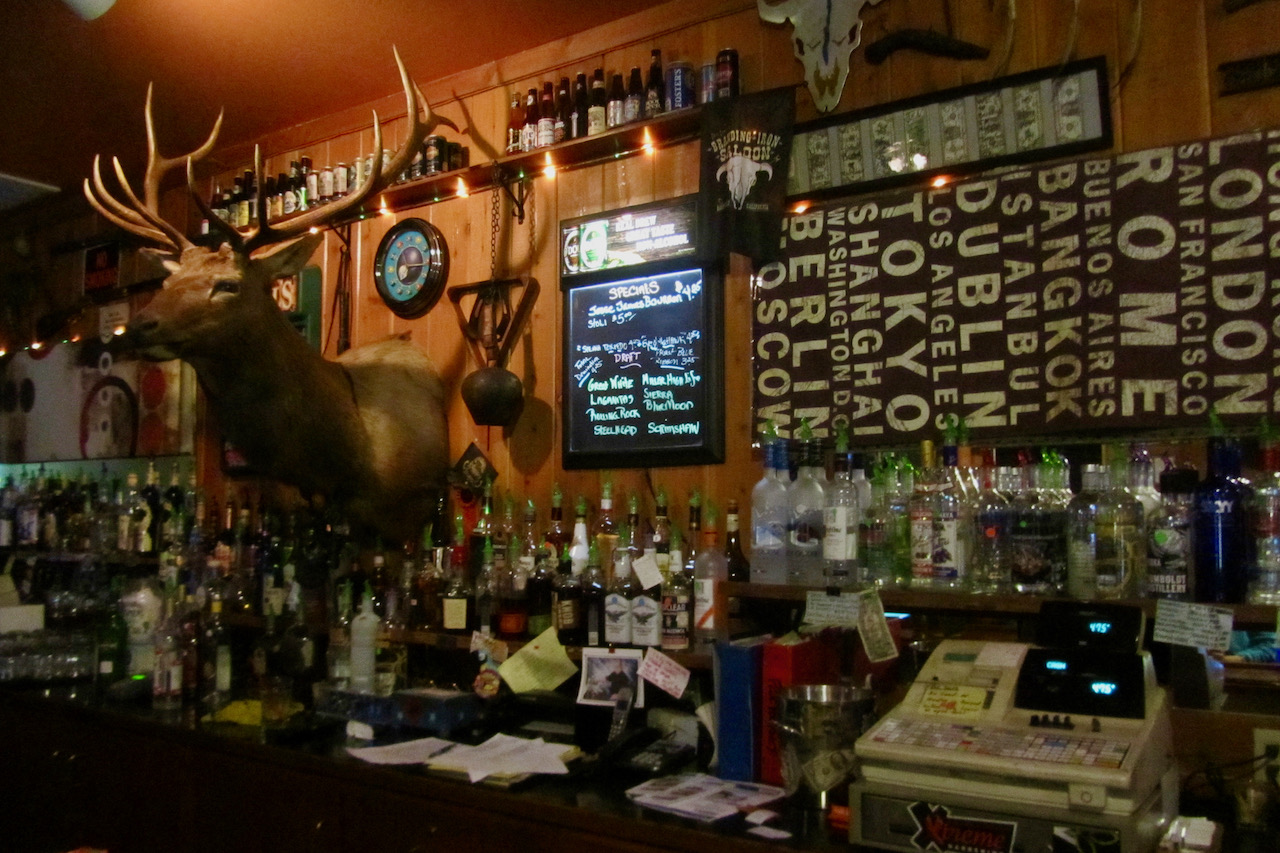

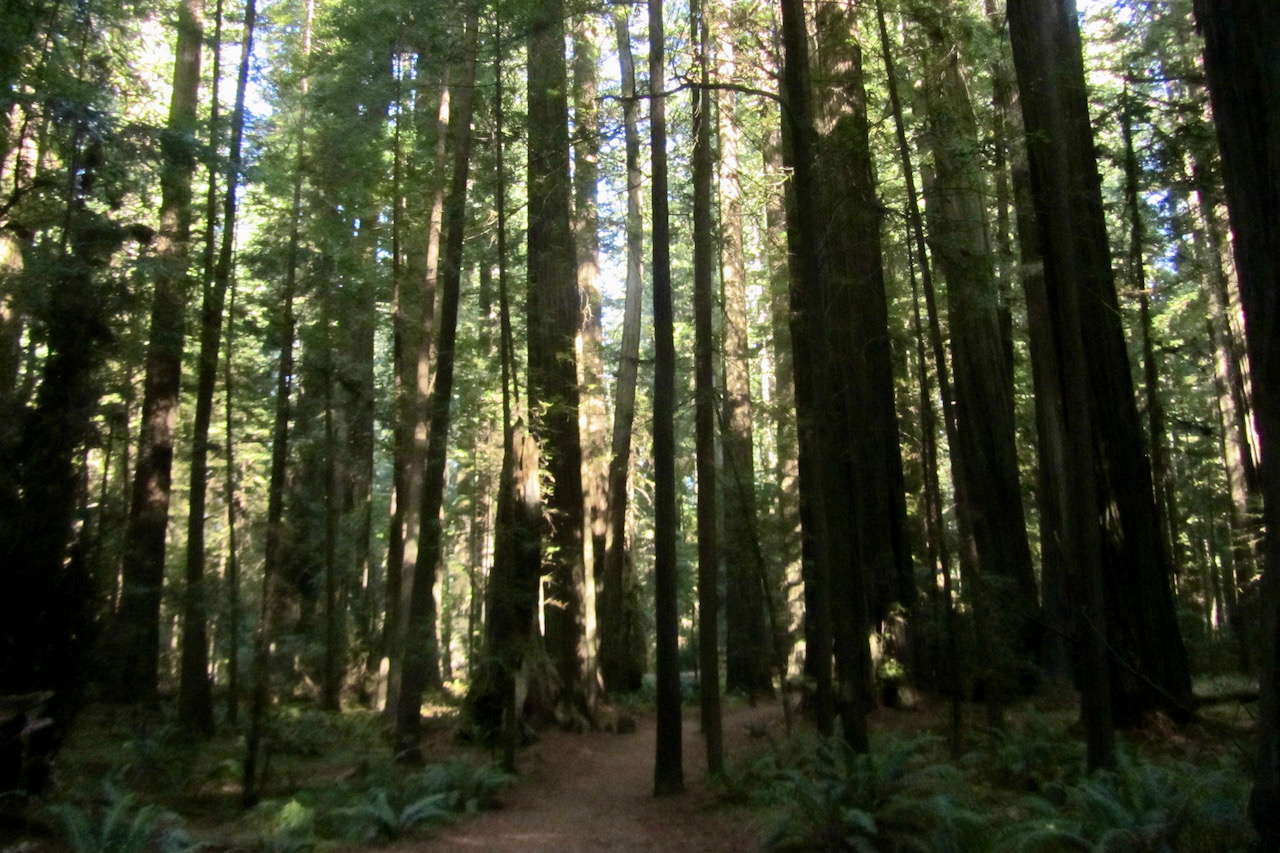
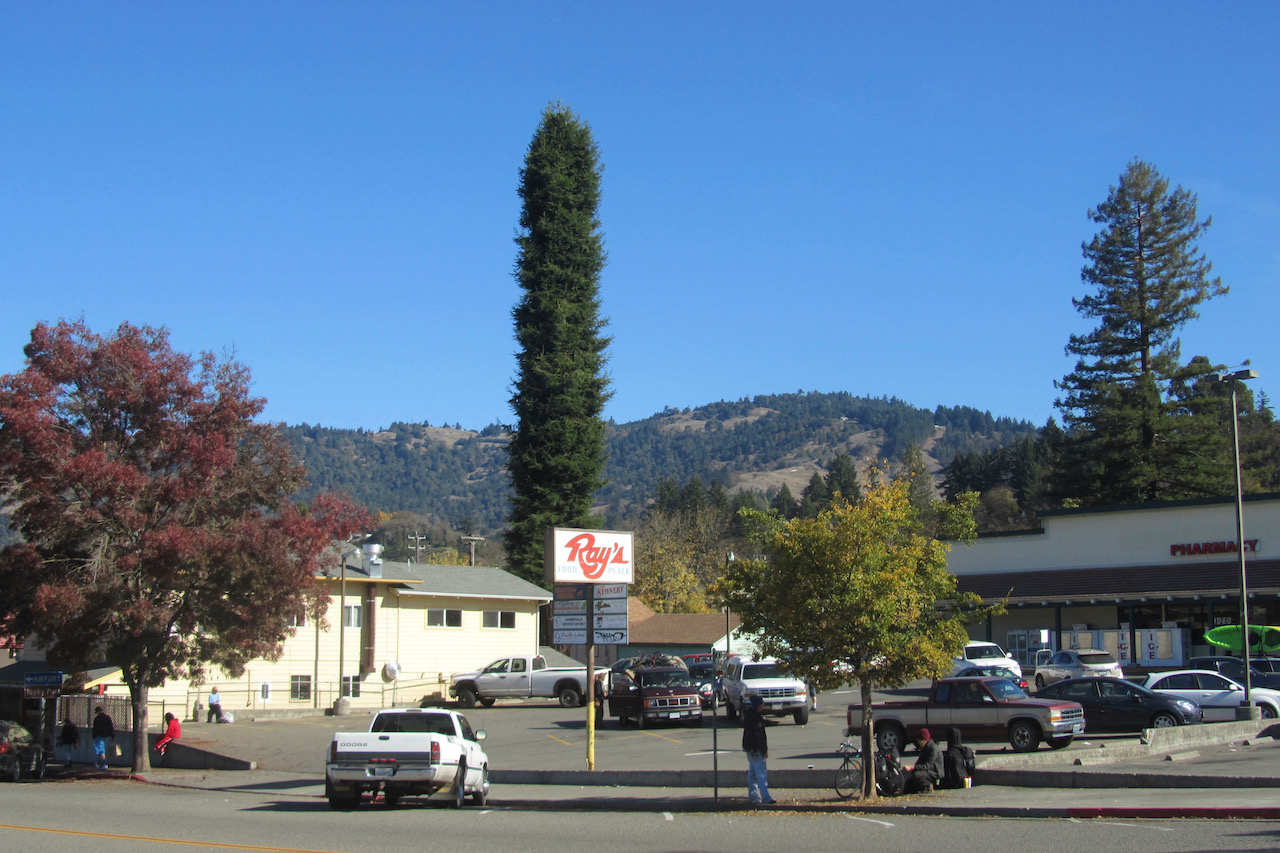
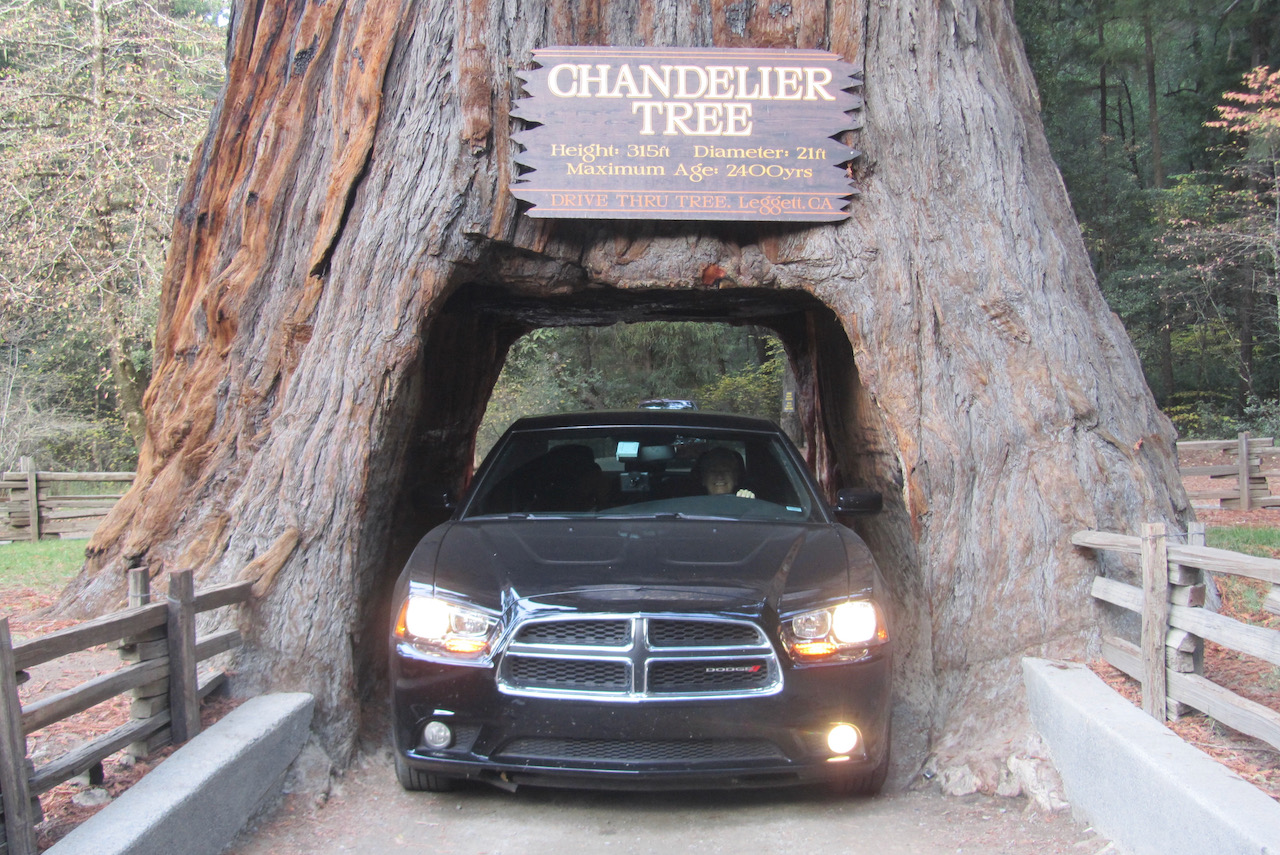
MORE INFO
 WATCH THE TRAILER: Murder Mountain was first screened by Fusion TV in 2018 before being picked up by Netflix. The trailer can be viewed HERE.
WATCH THE TRAILER: Murder Mountain was first screened by Fusion TV in 2018 before being picked up by Netflix. The trailer can be viewed HERE.
RELATED
 JOSHUA TREE PARSONS: Fifty years ago the Flying Burrito Brothers, a country rock band whose line-up included singer and guitarist Gram Parsons, released their seminal album The Gilded Palace of Sin… READ MORE
JOSHUA TREE PARSONS: Fifty years ago the Flying Burrito Brothers, a country rock band whose line-up included singer and guitarist Gram Parsons, released their seminal album The Gilded Palace of Sin… READ MORE
 AMERICA’S GHOST HIGHWAY: Pulling in at Roy’s Motel and Café, a legendary fuel stop on Route 66 in California, I was astonished to see the forecourt packed with dozens of shiny Dodge Challenger muscle cars. There’d been almost no traffic… READ MORE
AMERICA’S GHOST HIGHWAY: Pulling in at Roy’s Motel and Café, a legendary fuel stop on Route 66 in California, I was astonished to see the forecourt packed with dozens of shiny Dodge Challenger muscle cars. There’d been almost no traffic… READ MORE
 CALIFORNIA’S AMAZING WILDLIFE – GALLERY: Whales, elephant seals, elk, sea lions… California has all these and much, much more. But did you know that you can also find zebras grazing on the roadside in one part of the Golden State? READ MORE
CALIFORNIA’S AMAZING WILDLIFE – GALLERY: Whales, elephant seals, elk, sea lions… California has all these and much, much more. But did you know that you can also find zebras grazing on the roadside in one part of the Golden State? READ MORE
RECOMMENDED
 WELCOME TO OUR WORLD! Afaranwide’s home page – this is where you can find out about our latest posts and other highlights. READ MORE
WELCOME TO OUR WORLD! Afaranwide’s home page – this is where you can find out about our latest posts and other highlights. READ MORE
 TOP 10 VIRTUAL ATTRACTIONS: Many of the world’s most popular tourists sites are closed because of the coronavirus crisis, but you can still visit them virtually while you’re self-isolating. READ MORE
TOP 10 VIRTUAL ATTRACTIONS: Many of the world’s most popular tourists sites are closed because of the coronavirus crisis, but you can still visit them virtually while you’re self-isolating. READ MORE
 SHIMLA, QUEEN OF THE HILLS: Government officials once retreated to Shimla in the foothills of the Himalayas to escape India’s blazing hot summers. Now tourists make the same journey. READ MORE
SHIMLA, QUEEN OF THE HILLS: Government officials once retreated to Shimla in the foothills of the Himalayas to escape India’s blazing hot summers. Now tourists make the same journey. READ MORE
 TEN THINGS WE LEARNED: Our up-to-the-minute guide to creating a website, one step at a time. The costs, the mistakes – it’s what we wish we’d known when we started blogging. READ MORE
TEN THINGS WE LEARNED: Our up-to-the-minute guide to creating a website, one step at a time. The costs, the mistakes – it’s what we wish we’d known when we started blogging. READ MORE
 TROUBLED TIMES FOR EXPATS: Moving abroad can seem an idyllic prospect, but what happens when sudden upheavals or the inescapable realities of life intrude? READ MORE
TROUBLED TIMES FOR EXPATS: Moving abroad can seem an idyllic prospect, but what happens when sudden upheavals or the inescapable realities of life intrude? READ MORE
Disclosure: Afaranwide is an affiliate of leading travel operators such as Booking.com and Japan Rail Pass. If you purchase through our site we receive, at no additional cost to you, a small commission. We only work with companies we have used and recommend.
LET'S KEEP IN TOUCH!
Murder, Marijuana
& Missing Persons

COLIN SIMPSON
Stopover at Cannabis Capital Seen in Netflix Show
Garberville, Humboldt County, California
THE light was beginning to fade as my wife Sue and I headed into north-west California’s giant redwood territory in our black Dodge Charger rental. We were running a little late after stopping off to drive through the Chandelier Tree, a towering redwood with a car-size hole cut in it.
Back on the road, we reached the end of State Route 1, the 1,000-kilometre coastal highway that stretches from Orange County in southern California to Mendocino County in the north. We’d joined the route and then left it a number of times during an extended road trip through and across the state.
Now we were on US Route 101, known locally as the Redwoods Highway. This is a remote, sparsely populated part of California, way up north and not far from the Oregon border. It’s one of the places where the legendary wildman known as Bigfoot is said to have been seen. The nearest major city, Oakland, is 350 kilometres away.

We’d left the southern sunshine far behind, and the air felt cold in a way you don’t associate with California. We were starting to get the faint panicky feeling that happens when you’ve driven for long enough, it’s getting dark and you don’t have a room booked.
We began to notice signs for a place up ahead called Garberville. The name meant nothing to us, but we decided to see if there was a motel there, so we turned off the highway and headed into town. It’s a small place with a population of around 900 – just a main street, some shops including a supermarket, and a few other little roads. We’d been to lots of small towns on this trip, but as we stepped out of the car the atmosphere in this one seemed different, stranger, less welcoming. Maybe it was just the cold, we thought.
Largest Marijuana-Growing Area
We found a motel and checked in, then looked up Garberville, which is in Humboldt County, on the internet. Then it all became clear – we’d chanced upon America’s cannabis capital. For decades, illicit farms in the surrounding hills had been growing marijuana plants. Humboldt and the adjoining Mendocino County and Trinity County form the Emerald Triangle, the country’s largest marijuana-growing area with 770,000 kilograms of cannabis produced per year, according to state regulators. Conditions are said to be perfect for growing the crop, in the way that California’s Napa Valley and Burgundy in France are ideal for making wine.
We read grim news stories about dozens of people who had disappeared in unexplained circumstances. Over the years, federal agents, national guardsmen and even regular US Army soldiers had raided the farms, but the illegal trade persisted.

We gazed at each other in astonishment – it seemed incredible that such a place could exist. We headed out for a look around. The main street, Redwood Drive, had the usual collection of shops and diners, a gas station and a theatre advertising an upcoming appearance by an English rock musician who’d been famous many years before.
There was also a place called the Branding Iron Saloon. We stepped inside, and saw a couple of cowboys standing at the bar in Stetsons and boots. The bar was presided over by a woman manager who, while friendly enough, looked like she wouldn’t allow any trouble. Nevertheless, one young man was noisily out of his head. He didn’t give the impression he was experiencing the peace, love and understanding associated with marijuana back in the 1960s, so it seemed harder drugs, perhaps crystal meth, had reached the town.
Not Entirely Safe
We drank up and left, and went looking for something to eat. When we returned to the motel, Sue said she wouldn’t wish to be staying in Garberville on her own. It felt not entirely safe, in a way that we hadn’t experienced anywhere else in California.
The following morning we explored the town further. There was plenty of evidence of the disappearances we’d read about online the night before. Heart-wrenching flyers for help from people whose loved ones had vanished were displayed in shop windows, each one bearing an often-blurry photo of the missing friend or family member. Stores sold souvenirs such as T-shirts with the slogan: “Garberville – Where the Grass is Always Greener” and stocked water pipes and other drug paraphernalia.

The town attracts casual labourers, known as trimmigrants because they cut the leaves off the buds as part of the growing process, to work on the farms during the autumn harvest season, the time we were there. It seemed to be lucrative – we overheard one conversation between a man who was trying, without success, to recruit a youngster for a day’s work – he said he didn’t need the money. One report says they can earn $300 a day.
Humboldt County’s marijuana farmers were the subject of Murder Mountain, a true-crime documentary series on Netflix. The show covered some of the disappearances and killings that happened in the mountains, focussing on the case of murder victim Garret Rodriguez, a 29-year-old who had worked at a “grow” – the local name for a marijuana farm.
Found in Shallow Grave
He moved to Humboldt County from his home in San Diego in late 2012, and the following April his family reported him missing. His body was found in a shallow grave in the county in December 2013. The case remains unsolved, though his family has set up a GoFundMe appeal to raise money to hire private investigators.
Other cases are featured on Facebook pages with names like Humboldt Missing, and websites run by organisations such as the Nor-Cal Alliance for the Missing.
The region’s cannabis industry dates back to the late 1960s, when members of the back-to-the-land movement left cities and moved to rural areas. Some settled in the Triangle, and found it was ideal for cultivating marijuana. The number of growers expanded rapidly in the decades that followed, and according to one frequently quoted estimate there are at least 20,000 in the three counties.


Murder Mountain was filmed after California legalised cannabis for recreational use in 2016. Growers were required to apply for permits, and small farming operations are seen in the show coming under pressure because of increased regulation, high fees and excess supply. Many were said to be going out of business.
In fact it seems that, despite the efforts to make producers go legit, many prefer to continue operating illegally. The Humboldt County Sheriff’s Office marijuana enforcement team uncovered 86 illicit growing or processing sites in 2019, the most recent year for which figures are available. More than 200,000 cannabis plants were destroyed along with 18,000 kilograms of processed cannabis, while 81 illegal guns were seized and 16 arrests were made.
Taste, Sip and Smoke
But there are signs that the industry has become a bit less clandestine. Before Covid a company was offering “Taste, Sip and Smoke” (they’ve even trademarked the name) tours of farms at harvest time in the Emerald Triangle.
We didn’t linger in Garberville for long, getting back on the road after picking up some food at the uninviting supermarket. It was a relief to leave the town, though it was a fascinating – if disturbing – place to have happened upon.
January 2021
Top photo: Mist hangs over woods outside Garberville.








MORE INFO
 WATCH THE TRAILER: Murder Mountain was first screened by Fusion TV in 2018 before being picked up by Netflix. The trailer can be viewed HERE.
WATCH THE TRAILER: Murder Mountain was first screened by Fusion TV in 2018 before being picked up by Netflix. The trailer can be viewed HERE.
RELATED
 JOSHUA TREE PARSONS: Fifty years ago the Flying Burrito Brothers, a country rock band whose line-up included singer and guitarist Gram Parsons, released their seminal album The Gilded Palace of Sin… READ MORE
JOSHUA TREE PARSONS: Fifty years ago the Flying Burrito Brothers, a country rock band whose line-up included singer and guitarist Gram Parsons, released their seminal album The Gilded Palace of Sin… READ MORE
 AMERICA’S GHOST HIGHWAY: Pulling in at Roy’s Motel and Café, a legendary fuel stop on Route 66 in California, I was astonished to see the forecourt packed with dozens of shiny Dodge Challenger muscle cars. There’d been almost no traffic… READ MORE
AMERICA’S GHOST HIGHWAY: Pulling in at Roy’s Motel and Café, a legendary fuel stop on Route 66 in California, I was astonished to see the forecourt packed with dozens of shiny Dodge Challenger muscle cars. There’d been almost no traffic… READ MORE
 CALIFORNIA’S AMAZING WILDLIFE – GALLERY: Whales, elephant seals, elk, sea lions… California has all these and much, much more. But did you know that you can also find zebras grazing on the roadside in one part of the Golden State? READ MORE
CALIFORNIA’S AMAZING WILDLIFE – GALLERY: Whales, elephant seals, elk, sea lions… California has all these and much, much more. But did you know that you can also find zebras grazing on the roadside in one part of the Golden State? READ MORE
RECOMMENDED
 WELCOME TO OUR WORLD! Afaranwide’s home page – this is where you can find out about our latest posts and other highlights. READ MORE
WELCOME TO OUR WORLD! Afaranwide’s home page – this is where you can find out about our latest posts and other highlights. READ MORE
 TOP 10 VIRTUAL ATTRACTIONS: Many of the world’s most popular tourists sites are closed because of the coronavirus crisis, but you can still visit them virtually while you’re self-isolating. READ MORE
TOP 10 VIRTUAL ATTRACTIONS: Many of the world’s most popular tourists sites are closed because of the coronavirus crisis, but you can still visit them virtually while you’re self-isolating. READ MORE
 SHIMLA, QUEEN OF THE HILLS: Government officials once retreated to Shimla in the foothills of the Himalayas to escape India’s blazing hot summers. Now tourists make the same journey. READ MORE
SHIMLA, QUEEN OF THE HILLS: Government officials once retreated to Shimla in the foothills of the Himalayas to escape India’s blazing hot summers. Now tourists make the same journey. READ MORE
 TEN THINGS WE LEARNED: Our up-to-the-minute guide to creating a website, one step at a time. The costs, the mistakes – it’s what we wish we’d known when we started blogging. READ MORE
TEN THINGS WE LEARNED: Our up-to-the-minute guide to creating a website, one step at a time. The costs, the mistakes – it’s what we wish we’d known when we started blogging. READ MORE
 TROUBLED TIMES FOR EXPATS: Moving abroad can seem an idyllic prospect, but what happens when sudden upheavals or the inescapable realities of life intrude? READ MORE
TROUBLED TIMES FOR EXPATS: Moving abroad can seem an idyllic prospect, but what happens when sudden upheavals or the inescapable realities of life intrude? READ MORE
Disclosure: Afaranwide is an affiliate of leading travel operators such as Booking.com and Japan Rail Pass. If you purchase through our site we receive, at no additional cost to you, a small commission. We only work with companies we have used and recommend.
LET'S KEEP IN TOUCH!
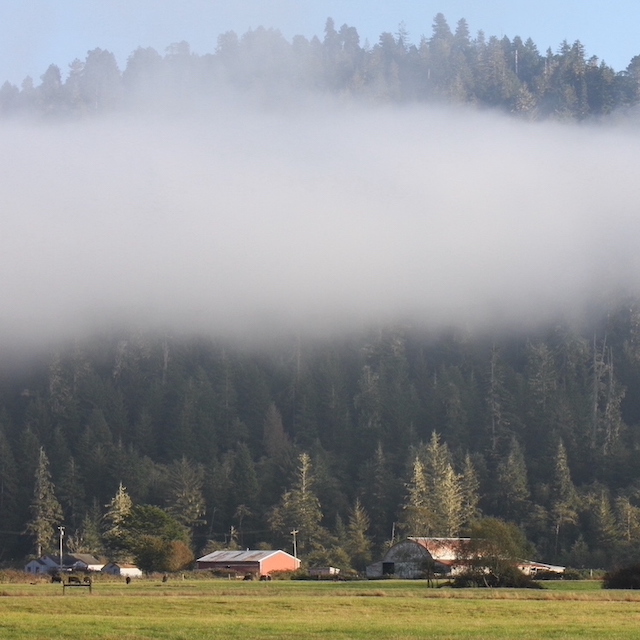
Murder, Marijuana
& Missing Persons
Stopover at Cannabis Capital Seen in Netflix Show

COLIN SIMPSON
Garberville, Humboldt County, California
THE light was beginning to fade as my wife Sue and I headed into north-west California’s giant redwood territory in our black Dodge Charger rental. We were running a little late after stopping off to drive through the Chandelier Tree, a towering redwood with a car-size hole cut in it.
Back on the road, we reached the end of State Route 1, the 1,000-kilometre coastal highway that stretches from Orange County in southern California to Mendocino County in the north. We’d joined the route and then left it a number of times during an extended road trip through and across the state.
Now we were on US Route 101, known locally as the Redwoods Highway. This is a remote, sparsely populated part of California, way up north and not far from the Oregon border. It’s one of the places where the legendary wildman known as Bigfoot is said to have been seen. The nearest major city, Oakland, is 350 kilometres away.

We’d left the southern sunshine far behind, and the air felt cold in a way you don’t associate with California. We were starting to get the faint panicky feeling that happens when you’ve driven for long enough, it’s getting dark and you don’t have a room booked.
We began to notice signs for a place up ahead called Garberville. The name meant nothing to us, but we decided to see if there was a motel there, so we turned off the highway and headed into town.
It’s a small place with a population of around 900 – just a main street, some shops including a supermarket, and a few other little roads. We’d been to lots of small towns on this trip, but as we stepped out of the car the atmosphere in this one seemed different, stranger, less welcoming. Maybe it was just the cold, we thought.
Largest Marijuana-Growing Area
We found a motel and checked in, then looked up Garberville, which is in Humboldt County, on the internet. Then it all became clear – we’d chanced upon America’s cannabis capital. For decades, illicit farms in the surrounding hills had been growing marijuana plants.
Humboldt and the adjoining Mendocino County and Trinity County form the Emerald Triangle, the country’s largest marijuana-growing area with 770,000 kilograms of cannabis produced per year, according to state regulators. Conditions are said to be perfect for growing the crop, in the way that California’s Napa Valley and Burgundy in France are ideal for making wine.
We read grim news stories about dozens of people who had disappeared in unexplained circumstances. Over the years, federal agents, national guardsmen and even regular US Army soldiers had raided the farms, but the illegal trade persisted.

We gazed at each other in astonishment – it seemed incredible that such a place could exist. We headed out for a look around. The main street, Redwood Drive, had the usual collection of shops and diners, a gas station and a theatre advertising an upcoming appearance by an English rock musician who’d been famous many years before.
There was also a place called the Branding Iron Saloon. We stepped inside, and saw a couple of cowboys standing at the bar in Stetsons and boots. The bar was presided over by a woman manager who, while friendly enough, looked like she wouldn’t allow any trouble.
Nevertheless, one young man was noisily out of his head. He didn’t give the impression he was experiencing the peace, love and understanding associated with marijuana back in the 1960s, so it seemed harder drugs, perhaps crystal meth, had reached the town.
Not Entirely Safe
We drank up and left, and went looking for something to eat. When we returned to the motel, Sue said she wouldn’t wish to be staying in Garberville on her own. It felt not entirely safe, in a way that we hadn’t experienced anywhere else in California.
The following morning we explored the town further. There was plenty of evidence of the disappearances we’d read about online the night before. Heart-wrenching flyers for help from people whose loved ones had vanished were displayed in shop windows, each one bearing an often-blurry photo of the missing friend or family member.
Stores sold souvenirs such as T-shirts with the slogan: “Garberville – Where the Grass is Always Greener” and stocked water pipes and other drug paraphernalia.

The town attracts casual labourers, known as trimmigrants because they cut the leaves off the buds as part of the growing process, to work on the farms during the autumn harvest season, the time we were there.
It seemed to be lucrative – we overheard one conversation between a man who was trying, without success, to recruit a youngster for a day’s work – he said he didn’t need the money. One report says they can earn $300 a day.
Humboldt County’s marijuana farmers were the subject of Murder Mountain, a true-crime documentary series on Netflix. The show covered some of the disappearances and killings that happened in the mountains, focussing on the case of murder victim Garret Rodriguez, a 29-year-old who had worked at a “grow” – the local name for a marijuana farm.
Found in Shallow Grave
He moved to Humboldt County from his home in San Diego in late 2012, and the following April his family reported him missing. His body was found in a shallow grave in the county in December 2013. The case remains unsolved, though his family has set up a GoFundMe appeal to raise money to hire private investigators.
Other cases are featured on Facebook pages with names like Humboldt Missing, and websites run by organisations such as the Nor-Cal Alliance for the Missing.
The region’s cannabis industry dates back to the late 1960s, when members of the back-to-the-land movement left cities and moved to rural areas. Some settled in the Triangle, and found it was ideal for cultivating marijuana. The number of growers expanded rapidly in the decades that followed, and according to one frequently quoted estimate there are at least 20,000 in the three counties.

Murder Mountain was filmed after California legalised cannabis for recreational use in 2016. Growers were required to apply for permits, and small farming operations are seen in the show coming under pressure because of increased regulation, high fees and excess supply. Many were said to be going out of business.
In fact it seems that, despite the efforts to make producers go legit, many prefer to continue operating illegally. The Humboldt County Sheriff’s Office marijuana enforcement team uncovered 86 illicit growing or processing sites in 2019, the most recent year for which figures are available. More than 200,000 cannabis plants were destroyed along with 18,000 kilograms of processed cannabis, while 81 illegal guns were seized and 16 arrests were made.
Taste, Sip and Smoke
But there are signs that the industry has become a bit less clandestine. Before Covid a company was offering “Taste, Sip and Smoke” (they’ve even trademarked the name) tours of farms at harvest time in the Emerald Triangle.
We didn’t linger in Garberville for long, getting back on the road after picking up some food at the uninviting supermarket. It was a relief to leave the town, though it was a fascinating – if disturbing – place to have happened upon.
January 2021
Top photo: Mist hangs over woods outside Garberville.
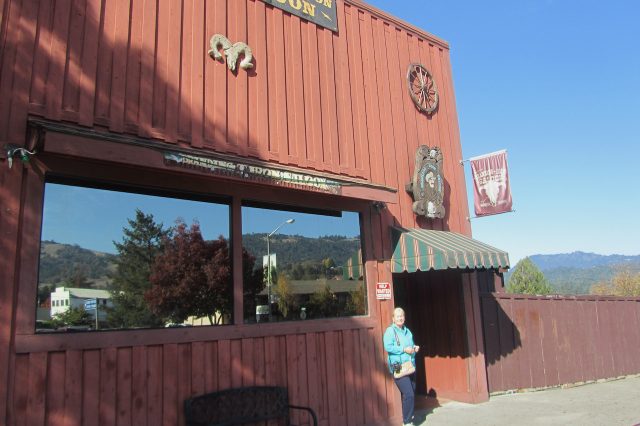



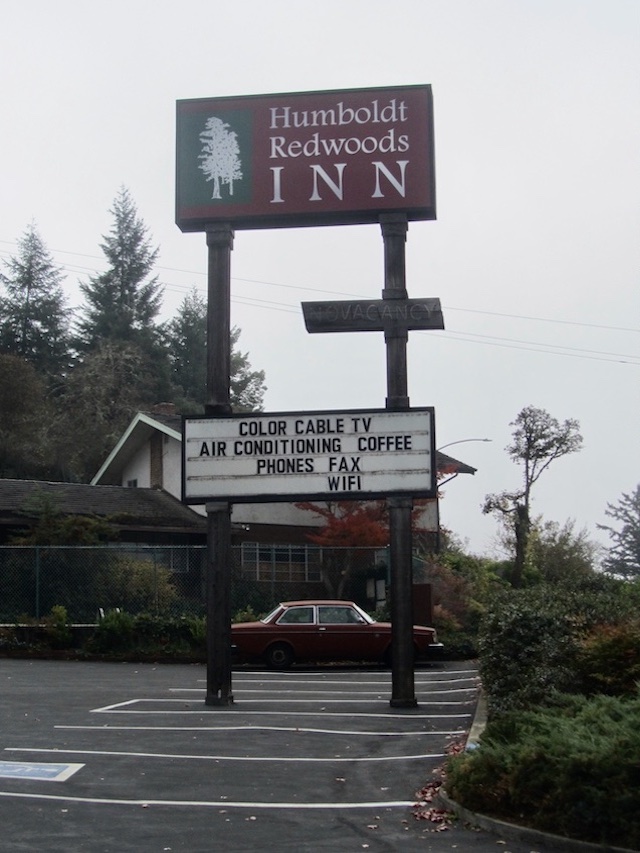
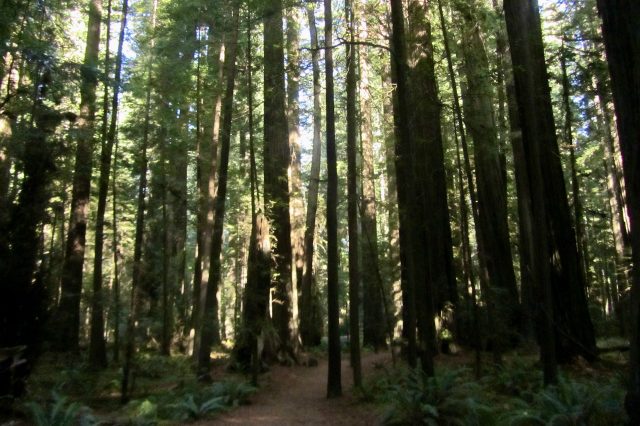
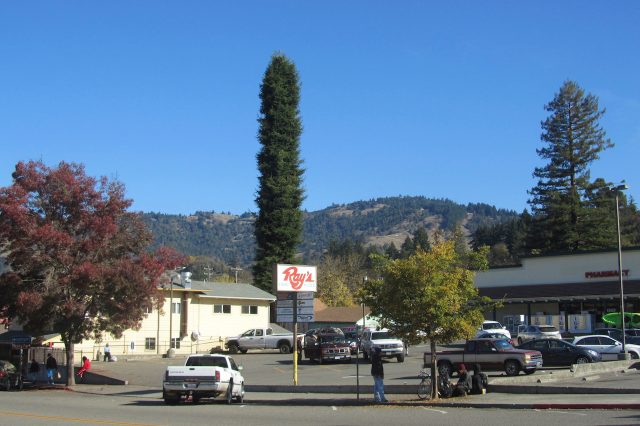
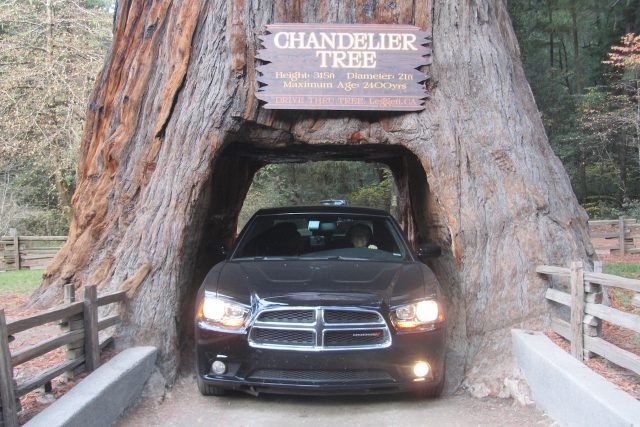
MORE INFO
 WATCH THE TRAILER: Murder Mountain was first screened by Fusion TV in 2018 before being picked up by Netflix. The trailer can be viewed HERE.
WATCH THE TRAILER: Murder Mountain was first screened by Fusion TV in 2018 before being picked up by Netflix. The trailer can be viewed HERE.
RELATED
 JOSHUA TREE PARSONS: Fifty years ago the Flying Burrito Brothers, a country rock band whose line-up included singer and guitarist Gram Parsons, released their seminal album The Gilded Palace of Sin… READ MORE
JOSHUA TREE PARSONS: Fifty years ago the Flying Burrito Brothers, a country rock band whose line-up included singer and guitarist Gram Parsons, released their seminal album The Gilded Palace of Sin… READ MORE
 AMERICA’S GHOST HIGHWAY: Pulling in at Roy’s Motel and Café, a legendary fuel stop on Route 66 in California, I was astonished to see the forecourt packed with dozens of shiny Dodge Challenger muscle cars. There’d been almost no traffic… READ MORE
AMERICA’S GHOST HIGHWAY: Pulling in at Roy’s Motel and Café, a legendary fuel stop on Route 66 in California, I was astonished to see the forecourt packed with dozens of shiny Dodge Challenger muscle cars. There’d been almost no traffic… READ MORE
 CALIFORNIA’S AMAZING WILDLIFE – GALLERY: Whales, elephant seals, elk, sea lions… California has all these and much, much more. But did you know that you can also find zebras grazing on the roadside in one part of the Golden State? READ MORE
CALIFORNIA’S AMAZING WILDLIFE – GALLERY: Whales, elephant seals, elk, sea lions… California has all these and much, much more. But did you know that you can also find zebras grazing on the roadside in one part of the Golden State? READ MORE
RECOMMENDED
 WELCOME TO OUR WORLD! Afaranwide’s home page – this is where you can find out about our latest posts and other highlights. READ MORE
WELCOME TO OUR WORLD! Afaranwide’s home page – this is where you can find out about our latest posts and other highlights. READ MORE
 TOP 10 VIRTUAL ATTRACTIONS: Many of the world’s most popular tourists sites are closed because of the coronavirus crisis, but you can still visit them virtually while you’re self-isolating. READ MORE
TOP 10 VIRTUAL ATTRACTIONS: Many of the world’s most popular tourists sites are closed because of the coronavirus crisis, but you can still visit them virtually while you’re self-isolating. READ MORE
 SHIMLA, QUEEN OF THE HILLS: Government officials once retreated to Shimla in the foothills of the Himalayas to escape India’s blazing hot summers. Now tourists make the same journey. READ MORE
SHIMLA, QUEEN OF THE HILLS: Government officials once retreated to Shimla in the foothills of the Himalayas to escape India’s blazing hot summers. Now tourists make the same journey. READ MORE
 TEN THINGS WE LEARNED: Our up-to-the-minute guide to creating a website, one step at a time. The costs, the mistakes – it’s what we wish we’d known when we started blogging. READ MORE
TEN THINGS WE LEARNED: Our up-to-the-minute guide to creating a website, one step at a time. The costs, the mistakes – it’s what we wish we’d known when we started blogging. READ MORE
 TROUBLED TIMES FOR EXPATS: Moving abroad can seem an idyllic prospect, but what happens when sudden upheavals or the inescapable realities of life intrude? READ MORE
TROUBLED TIMES FOR EXPATS: Moving abroad can seem an idyllic prospect, but what happens when sudden upheavals or the inescapable realities of life intrude? READ MORE
Disclosure: Afaranwide is an affiliate of leading travel operators such as Booking.com and Japan Rail Pass. If you purchase through our site we receive, at no additional cost to you, a small commission. We only work with companies we have used and recommend.



